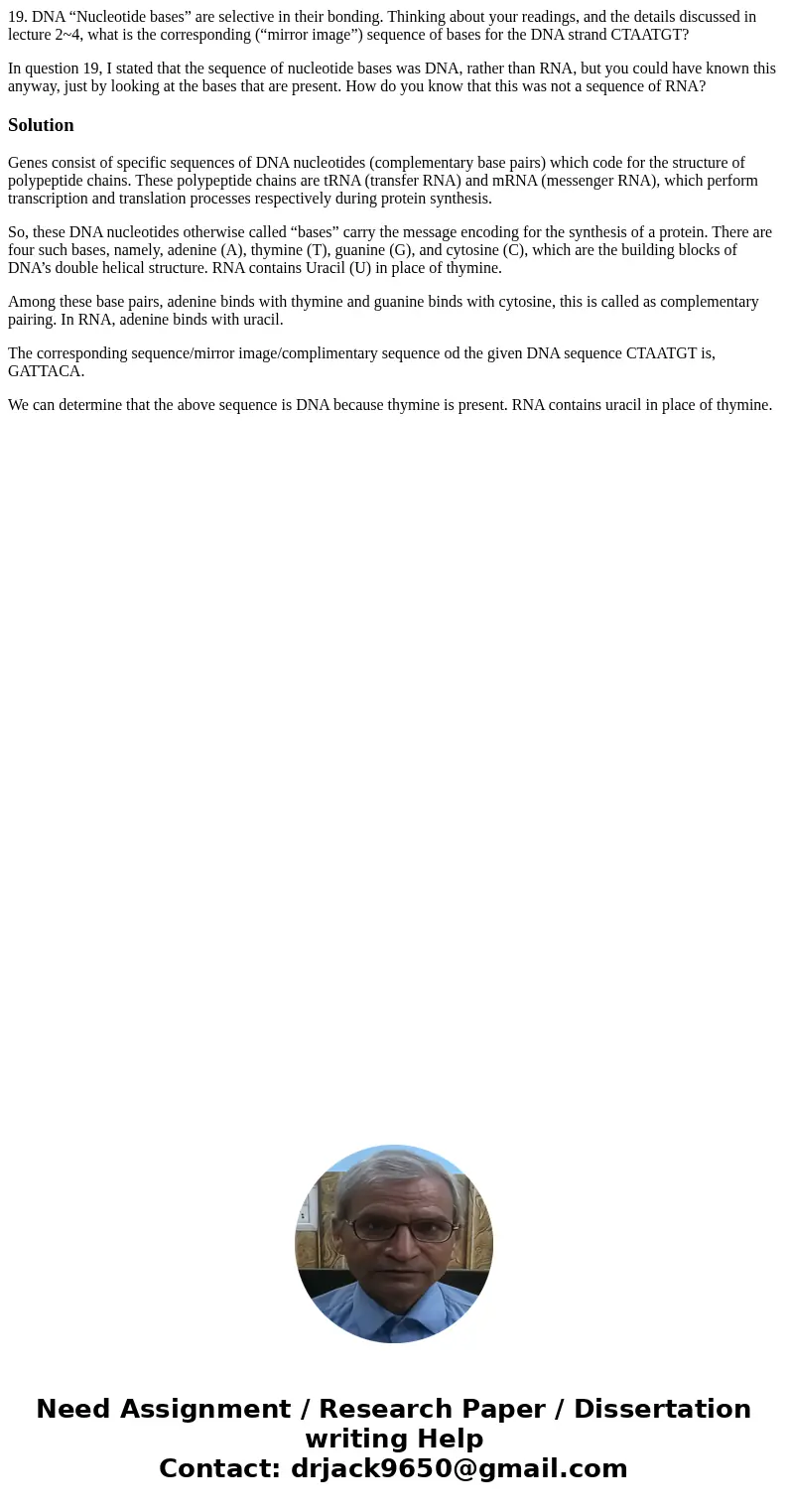19 DNA Nucleotide bases are selective in their bonding Think
19. DNA “Nucleotide bases” are selective in their bonding. Thinking about your readings, and the details discussed in lecture 2~4, what is the corresponding (“mirror image”) sequence of bases for the DNA strand CTAATGT?
In question 19, I stated that the sequence of nucleotide bases was DNA, rather than RNA, but you could have known this anyway, just by looking at the bases that are present. How do you know that this was not a sequence of RNA?
Solution
Genes consist of specific sequences of DNA nucleotides (complementary base pairs) which code for the structure of polypeptide chains. These polypeptide chains are tRNA (transfer RNA) and mRNA (messenger RNA), which perform transcription and translation processes respectively during protein synthesis.
So, these DNA nucleotides otherwise called “bases” carry the message encoding for the synthesis of a protein. There are four such bases, namely, adenine (A), thymine (T), guanine (G), and cytosine (C), which are the building blocks of DNA’s double helical structure. RNA contains Uracil (U) in place of thymine.
Among these base pairs, adenine binds with thymine and guanine binds with cytosine, this is called as complementary pairing. In RNA, adenine binds with uracil.
The corresponding sequence/mirror image/complimentary sequence od the given DNA sequence CTAATGT is, GATTACA.
We can determine that the above sequence is DNA because thymine is present. RNA contains uracil in place of thymine.

 Homework Sourse
Homework Sourse